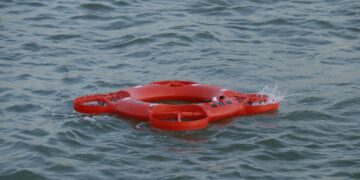NASA prepares for Venus exploration by adopting a new type of battery that can withstand the tremendous conditions of Venusian soil.
Space exploration continues. After numerous plans to explore and analyze Mars, NASA is now aiming to study Venus, our other neighbor, far less distant than the red planet. Shorter journey but surely more complex missions, considering the great difficulties of probes that reach the planet’s surface and are destroyed within hours (or minutes, in certain areas of the planet). NASA appears to be working on a prototype capable of solving this problem, allowing us to obtain useful data for the discovery of a still-so-unknown neighbor.
A machine operating on the surface of Venus faces two main problems: pressure, which reaches almost 100 atmospheres, and temperature, which with an average of about 464 degrees can even melt lead. This is precisely why, to date, probes sent to the planet have managed to send data for no more than two hours before being destroyed by the extreme surface conditions. The main problem, according to the researchers, would be the way through which the probes should be able to obtain energy. Given the extremely dense blanket of clouds surrounding the planet, it is impossible to use solar panels, and conventional batteries cannot survive those temperatures.
The solution may be coming these days, with the U.S. company Advanced Thermal Batteries appearing to have completed the prototype of a battery capable of operating at nearly 500 degrees temperature. This is a never-before-seen battery that would use different materials: the electrolyte on which the prototype would be based would be inert and solid at Earth temperatures but, under Venusian conditions, would be able to change to a liquid state, thus enabling energy production. By optimizing the first prototype, engineers at Advanced Thermal Batteries were able to obtain a battery capable of operating at Venusian temperatures for as many as 120 days. A noteworthy number of days on which NASA intends to base the next mission to the planet, that of the Llipse lander (Long-Lived In situ Solar System Explorer), which is expected to reach Venus and remain active on the surface for at least two months, collecting data on the composition of the Venusian atmosphere and weather.The mission is reportedly expected to involve a strange and unexpected collaboration with the Russian Space Agency, which, with current international tensions, could give the mission’s implementation quite a few problems. Venus’ proximity and profound similarities to our planet (size and composition) have made it a priority target since the dawn of space exploration. The scene of numerous challenges during the Cold War, Venus was recorded as an American success story in 1962, with the Mariner 2 probe performing a flyby of the planet, revealing the almost complete absence of a magnetic field and the very high temperature of the surface.
Photo : Pexels
Author: Alessandro Volpe

































